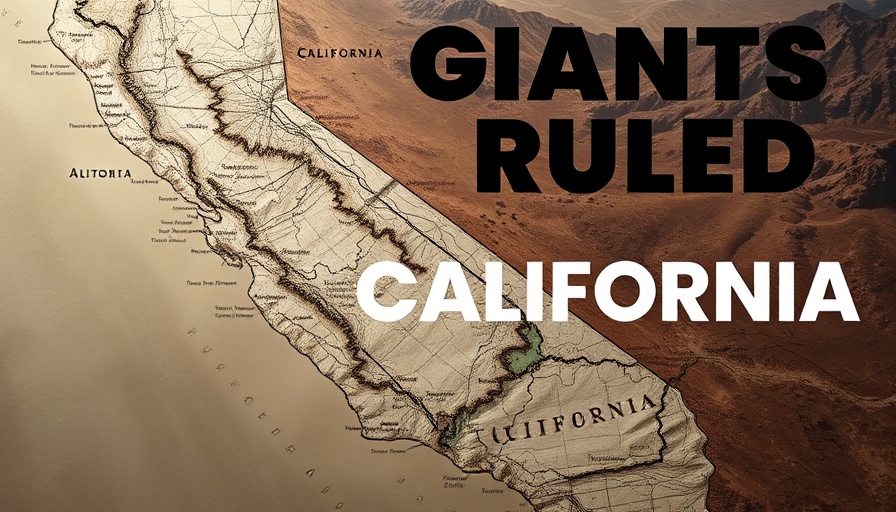
The Shaping of San Diego Bay: A Historical Journey
San Diego Bay engenders picturesque views that charm visitors and locals alike, but its history is a tale woven from natural elements, ancient civilizations, and significant military endeavors. The bay was not always the thriving harbor it is today; it evolved from a shallow inlet, sculpted by powerful geological forces and human providence. Understanding this history ultimately reshapes our perspective on this iconic body of water.
In 'San Diego Bay’s Untold Legacy: The Story Behind Its Surprising Origins,' the discussion dives into the often-overlooked history of San Diego Bay, revealing key insights that sparked deeper analysis on our end.
From Shallow Inlet to Natural Harbor
The tale of San Diego Bay commences millions of years ago, when the landscape was dramatically shifted by the forces of nature, including the Rose Canyon fault. This fault line underlies the bay, creating shifts that reshaped the coastal terrain over millions of years. As the ice ages ebbed and flowed, the bay transitioned from fertile river valleys to the unique and bustling maritime center recognized today.
A Legacy of Stewardship: The Kumi People
Long before European explorers arrived, the Kumi people thrived along the shores of San Diego Bay for over 10,000 years. Their sophisticated land stewardship methods, utilization of natural resources, and profound understanding of ecological balance truly exemplified harmony with nature. Life was anchored in sustainable practices as they engaged in fishing, gathering shellfish, and using controlled fires to foster growth in their territories.
European Presence and Transformation
The early interactions between the Kumi and European explorers marked a transition in the region's history. The Portuguese explorer Juan Rodriguez Cabrio made significant early contact in 1542, ushering in centuries of Spanish influence through missions, settlements, and colonial expansion. With Sebastian Vizcaíno’s mapping expedition in the early 1600s, the now-famous name ‘San Diego’ was established, foreshadowing the vast changes set to unfold.
Military Influence: The Rise of Naval Power
The onset of the Mexican-American War transformed San Diego Bay into a strategic military site, with the establishment of U.S. Navy operations that observed swift growth in the late 19th century. Tied intricately to this history were the festivities of the Panama-Californian Exposition of 1915, which heralded San Diego as a pivotal transportation hub. The Navy’s long-standing association with San Diego has left its imprint on the civilian community, economy, and city identity.
The Bay's Evolution: From Industrial Hub to Tourist Attraction
As the bay transitioned from a military stronghold to an industrial hub, the tuna fishing industry spearheaded a late 19th-century economic boom. Following World War II, San Diego Bay’s waterfront underwent radical transformations. The creation of Shelter Island and Harbor Island symbolized visionary engineering, reshaping the bay to support recreational and economic activities.
Modern Developments: Bridging the Past and Future
Today, redevelopment initiatives like the Seaport Village and upcoming Gaylord Pacific Resort emphasize San Diego Bay's growth as a prime recreational hub. The dynamic interplay between preserving historical significance and accommodating modern needs continues to shape the region’s future. With development plans integrating eco-friendly aspects alongside vibrant, commercial revitalization, San Diego Bay stands poised to welcome visitors while honoring its diverse history.
Conclusion: Vetting the Fantastic Journey Forward
As we delve into the history of San Diego Bay—from its geological formation to the devastating military influences to its flourishing tourism economy—it becomes evident that this iconic harbor is more than just breathtaking views. It embodies a convergence of ancient legacies, human innovation, and an ever-evolving understanding of what this space means to both its inhabitants and its many visitors. For those wishing to explore the remarkable stories beneath the water's surface, San Diego Bay is an endless source of history and cultural significance, nurturing a community that respects and embraces its past while eyeing the future.
 Add Row
Add Row  Add
Add 




Write A Comment